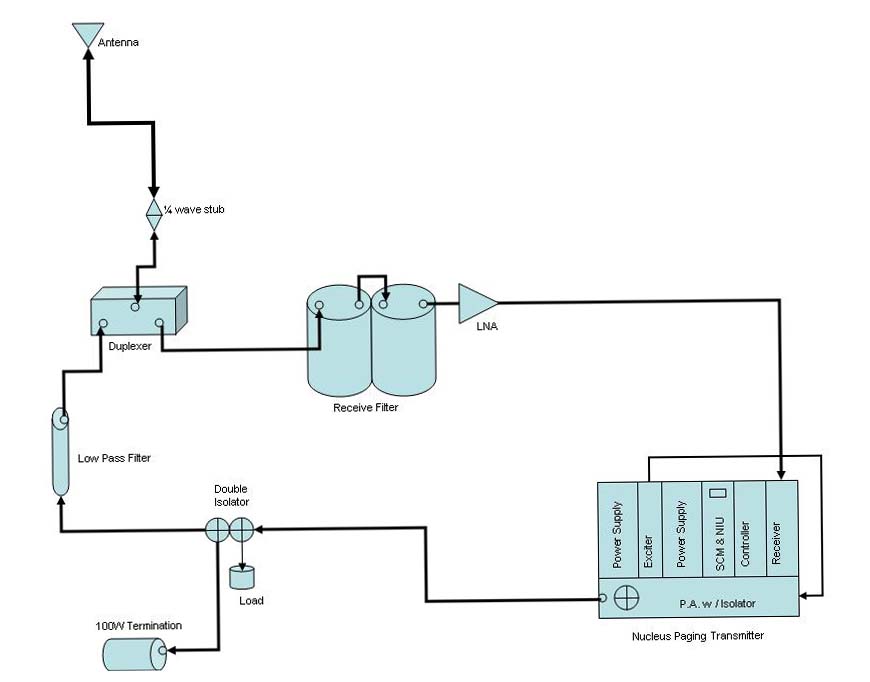N6OCS
The quick tour


This is the repeater flow chart and view of the back of the cabinet. Click on image for larger view
The N6OCS repeater is based on a Motorola Nucleus II 900 MHz paging station for the transmitter, power pmplifier, power supplies and mounting chassis. A modified Motorola Maxtrac 900 MHz mobile radio is used as the receiver and is mounted in the Nucleus chassis. This combination has been termed a "Nuc-Trac". A Pacific Research RI-300e controller takes care of all the control functions including tone encode and decode, audio levels, port control, and telemetry functions.
This is a quick tour through the repeater following the path of the user's signal.
The antenna receives a signal from the user's radio and it travels down the feed line into the building. As the feedline enters the repeater cabinet it first passes through a lightning arrestor then to the duplexer. The duplexer separates the transmit and receive frequencies so the transmitter and receiver can share the same antenna yet keep the large energy level of the transmitter out of the receiver. From the duplexer the signal is feed to a 2 cavity filter. Because of the high noise floor at this site, receive filtering is a must. The now cleaned up signal has lost a fair amount of energy so we send it through a low noise pre-amp and then finally on to the receiver.
The raw audio output from the receiver is sent to the controller for processing and tone decoding. The audio levels (modulation levels) are also set in the controller then the audio signal is sent off to the transmitter exciter where it is imposed onto the RF carrier signal for transmission.
The exciter produces a low level signal that is passed to the power amp (PA) which raises the power level up to about 100 watts for transmission. The signal then passes through a double circulator or isolator which acts like a one way traffic circle that keeps bad stuff or reflected energy from coming back into the transmitter. After the circulator, a low pass filter cleans off any harmonics that may be generated by the circulator then back to the duplexer and on to the antenna where it is radiated into space.